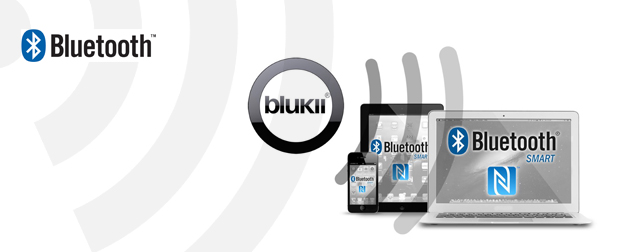 Holger Schaffer is one of the bright minds behind blukii and App 2.0. He studied Electrical Engineering and Information Technology at the University of Applied Sciences of the German Federal Post in Berlin. In the past he worked for the Fraunhofer Institute as well as at Junghans Systems at the Junghans Uhren GmbH. Afterwards he founded his own company HSchaffer GmbH and joined Schneider Schreibgeräte GmbH as Director Business Development in 2010. We had the chance for a short interview with him on App 2.0 and blukii’s involvement in the WT Innovation World Cup.
Holger Schaffer is one of the bright minds behind blukii and App 2.0. He studied Electrical Engineering and Information Technology at the University of Applied Sciences of the German Federal Post in Berlin. In the past he worked for the Fraunhofer Institute as well as at Junghans Systems at the Junghans Uhren GmbH. Afterwards he founded his own company HSchaffer GmbH and joined Schneider Schreibgeräte GmbH as Director Business Development in 2010. We had the chance for a short interview with him on App 2.0 and blukii’s involvement in the WT Innovation World Cup.
Could you quickly summarize for our readers the key aspects of App 2.0 and the blukii open hardware platform?
The integration of Bluetooth® smart and NFC interfaces in smartphones, tablets and notebooks lays the groundwork for the next generation of apps “App 2.0”. Standalone products become product systems. Entirely new solutions become possible. With the blukii open hardware platform.
The crucial difference between App 1.0 and App 2.0: Unlike App 1.0, which works with one device only, e.g. a smartphone, tablet or notebook, App 2.0 requires at least two devices. In addition to your regular device you need a second accessory or product like a keychain, bracelet, card holder, pen, clip, or pendant communicating with your smartphone, tablet or notebook through the new interfaces.
Hardware companies can realize additional hardware without a problem; most software developers on the other hand will have difficulties. That is our target group, these are the developers we provide the open hardware platform blukii, consisting of several ready-to-sell products – the blukii key fob, blukii shoe fob, blukii pocket pen, blukii badge, blukii clip, and more.
blukii is a partner of the WT Innovation World Cup for the first time this year. What can developers access via participating in the innovation competition?
Apple revolutionized software development and marketing with the iPhone and the App store. Now is the time for the second step of this revolution. Single products now turn into whole product systems. With our ready-to-sell blukii development kits, developers can realize a marketable product quickly and without risks. Realizing a product idea based on an already existing and proven hardware platform significantly increases the chances of success.
With all the crowdfunding platforms developers can now test their ideas market acceptance before production, receive financing without banks, and make it accessible to a broad public. At the same time, a network of supporters provides a plethora people who are willing to help test and optimize products for free, allowing developers to rapidly offer high quality products with a focus on market needs, and distributing it via App store or e-shops worldwide.
It has probably never been as easy as today to implement and market new (App 2.0) ideas successfully. That’s the opportunity for active people with good ideas in all over the world.
Schneider Schreibgeräte GmbH is a traditional manufacturer for writing instruments. How come that you started looking into this field of technology? How did you come up with the idea for blukii?
The invention of computers altered writing very much. You have to adapt to this structural change. Mr. Roland Schneider, CEO of Schneider Schreibgeräte GmbH is very much interested in technical innovation and open to new ideas.
I myself have been working with the two technologies RFID/NFC and Bluetooth for a long time now, first at Junghans and then in my own company. While looking for a partner I met with Roland Schneider.
Out of this contact the new business segment “C.Schneider – New Solutions” with its open hardware platform blukii was created. We and our partner ReThink the existing solutions and create new solutions based on blukii. First marketable products such as the blukii NoteBook Protector have already been developed. Numerous of other new solutions will follow.
What is your favorite wearable technologies product, besides your own development?
Most exciting and interesting for me is the further development of the watch. Products like the Pebble or Mio Alpha which measure heart rate without a chest strap are also very interesting; especially the stories behind them are exciting. How did it come to be? Who is behind this?












